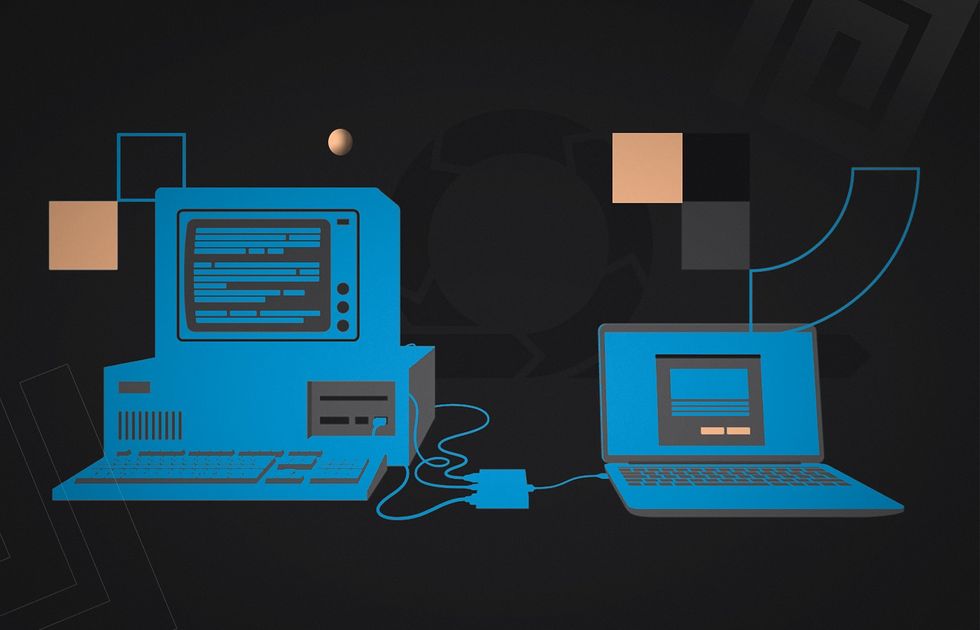DevOps for Legacy Systems: Overcoming the Challenges of Modern Software Development
 marcos albano
marcos albanoTable of contents
- Challenges of DevOps for Legacy Systems
- 1) Resistance to Changes
- 2) Integration with Existing Systems
- 3) Limited Visibility and Monitoring
- 4) Lack of Documentation
- 5) Security and Compliance Risks
- Overcoming the Challenges of DevOps for Legacy Systems
- 1) Establish Clear Goals and Objectives.
- 2) Develop a Plan for Integration
- 3) Invest in Automation
- 4) Implement Continuous Integration and Delivery
- 5) Focus on Security and Compliance
- 6) Promote Collaboration and Communication
- 7) Document Processes and Procedures
- Conclusion
- Sources

As software development practices evolve rapidly, organizations often find themselves dealing with legacy systems that were not designed to support modern software development practices. Legacy systems can be defined as applications, platforms, or infrastructure that are still in use but is outdated in terms of technology and architecture.
Legacy systems pose several challenges for organizations that want to adopt DevOps practices. DevOps, which is the practice of integrating development and operations teams to achieve more efficient and effective software delivery, requires a high degree of automation, collaboration, and communication between teams. However, legacy systems may not be designed to support the automation and integration that are required for DevOps.
In this article, we will discuss some of the challenges of applying DevOps to legacy systems, and how organizations can overcome these challenges to achieve successful DevOps implementation.
Challenges of DevOps for Legacy Systems
1) Resistance to Changes
One of the biggest challenges of implementing DevOps in legacy systems is the resistance to change. Legacy systems are often maintained by long-time employees who are resistant to change and new technologies. They may be accustomed to manual processes and find it difficult to adapt to automated processes.
2) Integration with Existing Systems
Legacy systems may be built on outdated technology stacks that are not compatible with modern DevOps tools and practices. Integrating these systems with new DevOps tools and practices may require significant effort and resources.
3) Limited Visibility and Monitoring
Legacy systems may not have the same level of visibility and monitoring capabilities as modern systems. This can make it difficult to track and analyze performance metrics and identify areas for improvement.
4) Lack of Documentation
Legacy systems may not have up-to-date documentation, making it difficult for new team members to understand how the system works and how it is maintained.
5) Security and Compliance Risks
Legacy systems may not meet modern security and compliance standards. This can be a significant challenge for organizations that need to ensure the security and compliance of their systems.
Overcoming the Challenges of DevOps for Legacy Systems
1) Establish Clear Goals and Objectives.
The first step in implementing DevOps for legacy systems is to establish clear goals and objectives. This includes identifying the specific areas where DevOps can be applied to achieve the greatest impact, such as reducing manual processes or improving collaboration between teams.
2) Develop a Plan for Integration
Once the goals and objectives have been established, organizations can develop a plan for integrating DevOps practices into the legacy system. This plan should include identifying the specific DevOps tools and practices that will be used, as well as any necessary modifications to the legacy system.
3) Invest in Automation
Automation is a key component of DevOps. Organizations should invest in automation tools and practices that can help streamline manual processes and improve collaboration between teams.
4) Implement Continuous Integration and Delivery
Continuous integration and delivery (CI/CD) is a key practice in DevOps. CI/CD helps to ensure that code changes are tested and integrated quickly and efficiently. Organizations should implement CI/CD practices for their legacy systems to improve the speed and quality of software delivery.
5) Focus on Security and Compliance
Legacy systems may pose security and compliance risks. Organizations should focus on implementing security and compliance measures to ensure that their legacy systems are secure and compliant with industry standards.
6) Promote Collaboration and Communication
Collaboration and communication are key components of DevOps. Organizations should encourage collaboration and communication between development and operations teams to improve efficiency and reduce errors.
7) Document Processes and Procedures
Legacy systems may not have up-to-date documentation. Organizations should document all processes and procedures related to the legacy system to ensure that new team members can quickly understand how the system works and how it is maintained.
Conclusion
In conclusion, DevOps can be a powerful tool for organizations looking to modernize their software development practices, even when dealing with legacy systems. While legacy systems pose unique challenges, such as resistance to change, limited visibility, and outdated technology stacks, these challenges can be overcome by establishing clear goals and objectives, investing in automation, implementing CI/CD practices, focusing on security and compliance, promoting collaboration and communication, and documenting all processes and procedures. By following these guidelines, organizations can successfully apply DevOps to their legacy systems, improving the speed and quality of software delivery and achieving greater business agility.
Sources
Subscribe to my newsletter
Read articles from marcos albano directly inside your inbox. Subscribe to the newsletter, and don't miss out.
Written by
